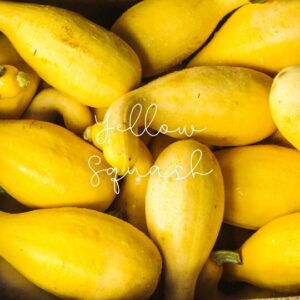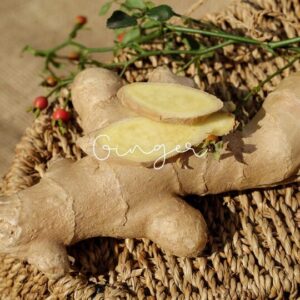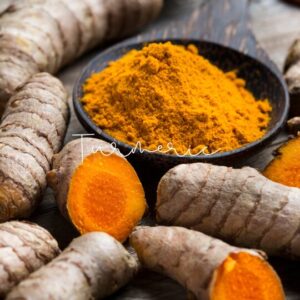Acid reflux, a common condition where stomach acid flows back into the esophagus, can cause discomfort and long-term health issues if not properly managed. Fortunately, incorporating certain foods into your diet can help soothe symptoms and improve digestion.
In this article, we’re focusing on yellow foods—nutrient-rich options that are not only delicious but also beneficial for acid reflux relief. These foods can help soothe the stomach, strengthen the digestive tract, and reduce acid production.
What Are the Best Yellow Foods for Acid Reflux?
Here are seven yellow foods that can naturally help prevent and manage acid reflux:
7. Yellow Squash: Is Yellow Squash Good for Acid Reflux?
Yellow squash is a low-acid vegetable that’s gentle on the stomach and easy to digest, making it an excellent choice for those managing acid reflux.
Spiralize it into noodles for a low-acid pasta alternative.
Why It Helps:
Low acidity reduces the risk of triggering reflux symptoms.
High in fiber, which promotes regular digestion and decreases stomach pressure, preventing acid backflow.
How to Use:
Steam, bake, or sauté it as a side dish.

Yellow squash, a vegetable that is as beneficial as it is delicious, especially for those managing acid reflux.
Yellow squash is characterized by its mild flavor and easy digestibility, making it an excellent choice for individuals with sensitive stomachs or digestive issues.
One of the key reasons yellow squash is so effective for those suffering from acid reflux is its low acidic content.
Foods that are high in acid can trigger or exacerbate reflux symptoms, causing discomfort and pain.
Yellow squash, however, has a low acidity, which means it’s less likely to provoke the stomach acids that lead to reflux.
In addition to being low in acid, yellow squash is a good source of dietary fiber.
Fiber plays a crucial role in digestive health by helping to maintain regular bowel movements.
Regularity is essential because it helps prevent the buildup of pressure in the stomach and intestines.
When there is less pressure, the likelihood of stomach acid being pushed back up into the esophagus decreases, thereby reducing reflux symptoms.
Moreover, the fiber in yellow squash can help absorb and dilute stomach acids, providing a natural buffer against irritation of the esophagus.
This absorption helps to stabilize the stomach’s environment and can lead to a smoother digestion process.
Including yellow squash in your diet can be both versatile and enjoyable.
It can be steamed, baked, sautéed, or even spiralized into noodles as a low-acid, gut-friendly alternative to traditional pasta.
Its mild flavor allows it to blend well with a variety of dishes, making it easy to incorporate into meals to ensure you reap its benefits regularly.
6. Ginger: How Does Ginger Soothe Acid Reflux?
Ginger’s anti-inflammatory properties make it a go-to remedy for digestive health.
Try ginger supplements after consulting with a healthcare provider.
Why It Helps:
Relaxes gastrointestinal muscles to prevent acid backflow.
Speeds up gastric emptying, reducing the time acid remains in the stomach.
How to Use:
Brew ginger tea, add fresh slices to meals, or blend it into smoothies.

Ginger, a root celebrated not only for its distinctive flavor but also for its considerable medicinal benefits, particularly when it comes to digestive health.
Ginger has been used for centuries as a natural remedy for a variety of ailments, including nausea and indigestion, and is particularly effective in managing and preventing acid reflux.
Ginger’s ability to aid in digestion and soothe the stomach comes from its potent anti-inflammatory properties and its active compounds, such as gingerol.
These compounds help relax the smooth muscle in the gastrointestinal tract, which can alleviate symptoms of gastrointestinal distress.
By promoting smoother digestion, ginger helps prevent the stomach contents from backing up into the esophagus, a primary cause of acid reflux.
Additionally, ginger can help increase the rate at which food empties from the stomach into the intestines, known as gastric emptying.
By speeding up this process, ginger minimizes the time food and acid are in the stomach, thus reducing the opportunity for heartburn to occur.
Incorporating ginger into your diet can be as simple as adding fresh ginger to smoothies, brewing it into a soothing tea, or using it as a spice in your cooking.
For those with sensitive palates, ginger supplements are also an option, though it’s wise to consult with a healthcare provider before starting any new supplement regimen.
5. Bananas: Are Bananas Good for Acid Reflux?
Bananas are naturally low in acidity and packed with digestive benefits.
Avoid overripe bananas, as they contain more sugar, which might not suit everyone.
Why It Helps:
Contains pectin, a soluble fiber that absorbs stomach acid and slows digestion.
Natural antacid properties neutralize acid and soothe the stomach lining.
How to Use:
Eat raw as a snack, blend into smoothies, or add to oatmeal and yogurt.

Bananas – an excellent dietary choice for preventing acid reflux.
Known for their soft texture and mild flavor, bananas are naturally low in acid, making them a particularly gentle option for those with sensitive stomachs or those prone to acid reflux.
One of the standout features of bananas is their content of pectin, a type of soluble fiber that has several benefits for digestive health.
Pectin helps to absorb excess stomach acid and slowly moves through the stomach, which aids in reducing the rapid emptying that can contribute to acid reflux symptoms.
By moderating how quickly the stomach empties, pectin helps prevent the surge of stomach contents back into the esophagus, thus reducing the likelihood of reflux.
Furthermore, the soluble fiber in bananas can strengthen the stomach lining.
A robust stomach lining is crucial for resisting the irritating effects of stomach acid, which can otherwise lead to discomfort and inflammation in cases of reflux.
Additionally, the natural antacid effect of bananas helps neutralize stomach acid, providing immediate relief from symptoms like heartburn.
Bananas are incredibly versatile and can be incorporated into the diet in many ways.
They can be eaten raw as a quick snack, blended into smoothies, baked into breads, or mashed and added to oatmeal or yogurt.
For individuals experiencing acid reflux, consuming a banana as part of a meal or as a snack can help manage symptoms and provide soothing relief.
However, it’s important to note that overripe bananas are higher in sugar, which may not be ideal for everyone, especially those managing blood sugar levels.
4. Yellow Apples: Are Yellow Apples Better for Acid Reflux?
Yellow apples, like Golden Delicious, are lower in acidity compared to red or green apples, making them reflux-friendly.
Eat raw as a snack, slice into salads, or bake into applesauce for a gentle treat.
Why It Helps:
High in fiber, which regulates digestion and minimizes acid buildup.
Absorbs excess stomach acid and stabilizes digestion.
How to Use:
Eat raw as a snack, slice into salads, or bake into applesauce for a gentle treat.

These apples are a particularly good choice for those managing acid reflux, thanks to their sweeter flavor and lower acidity compared to many red or green apples.
This makes them less likely to trigger the uncomfortable symptoms associated with acid reflux, such as heartburn and indigestion.
Yellow apples are also a good source of dietary fiber, which plays a crucial role in digestive health.
Fiber helps regulate the digestive system by improving the consistency and movement of bowel contents through the digestive tract.
This regulation is particularly beneficial for acid reflux sufferers as it helps ensure food moves efficiently through the stomach and reduces the likelihood of stomach acid flowing back up into the esophagus.
Moreover, the fiber in yellow apples can absorb excess stomach acid and provide a bulk that aids in more gentle digestion.
By stabilizing digestion and reducing the occurrence of sudden acid surges, yellow apples help maintain a healthier balance in the stomach.
Yellow apples can be eaten raw as a crunchy snack, chopped into salads, cooked down into applesauce, or even baked into desserts.
3. Corn: Can Corn Help with Acid Reflux?
Corn is a versatile yellow food rich in fiber, which aids in digestion and prevents acid reflux triggers.
Avoid high-fat toppings like butter, which can exacerbate reflux.
Why It Helps:
Fiber regulates the digestive process, minimizing reflux risks.
Keeps the stomach contents moving efficiently.
How to Use:
Enjoy it grilled, popped, or added to soups and casseroles.

Corn, a versatile and popular yellow food that brings substantial benefits for those managing or seeking to prevent acid reflux.
Corn is high in fiber, which is a crucial component for any reflux-prevention diet.
The fiber in corn aids in digestion by helping to regulate the movement of food through the digestive tract.
This regulation is key for preventing the conditions that lead to acid reflux.
This smooth and regular food movement facilitated by dietary fiber minimizes the chances of experiencing the uncomfortable and often painful symptoms of reflux, such as heartburn.
Corn can be enjoyed in many forms, making it easy to incorporate into your diet.
Whether it’s popped as a healthy snack, grilled on the cob during a barbecue, or included in salads, soups, or casseroles, corn adds a delightful sweetness and texture to meals.
For those with acid reflux, it’s advisable to consume corn in moderation and ensure it’s prepared in a healthy way—avoiding high-fat toppings or heavily buttered preparations that might counteract its beneficial effects.
2. Yellow Lentils: Why Are Lentils Good for Acid Reflux?
Yellow lentils are a nutritional powerhouse, packed with protein and fiber that support digestive health.
Use as a base for hearty salads or grain-free dishes.
Why It Helps:
Protein repairs and strengthens digestive tissues, protecting against acid damage.
Fiber improves digestion, reducing acid buildup and reflux symptoms.
How to Use:
Prepare lentil soups, dals, or stews.

Yellow lentils, a powerhouse of nutrition that is especially beneficial for those managing acid reflux.
Yellow lentils are an excellent source of both protein and fiber, making them an ideal dietary choice for improving digestive health.
The protein found in yellow lentils is crucial for maintaining the health and integrity of various body tissues, including those of the digestive tract.
Healthy tissues in the esophagus and stomach can better withstand and recover from the effects of stomach acid, reducing the potential for damage that can exacerbate acid reflux symptoms.
Protein also aids in the repair and regeneration of mucosal lining within the digestive system, providing a strong barrier against the irritating effects of acid.
Additionally, the high fiber content in yellow lentils is invaluable in managing acid reflux.
As we’ve talked about earlier, fiber improves digestive efficiency and speeds up the passage of food through the stomach and into the intestines, reducing the time that acids can linger in the stomach and potentially move back up into the esophagus.
This faster, more efficient digestion helps prevent the episodes of reflux and the discomfort that accompanies them.
Integrating yellow lentils into your diet is straightforward and can be incredibly delicious.
They can be prepared as a hearty soup, included in salads, or used as a base for dishes such as dals and stews.
Because they are mild in flavor, yellow lentils can absorb a variety of spices and seasonings, making them versatile in many culinary traditions.
1. Turmeric: How Does Turmeric Help Manage Acid Reflux?
Turmeric, known for its vibrant color and potent health benefits, tops the list for acid reflux relief.
Combine with black pepper to enhance curcumin absorption.
Why It Helps:
Curcumin reduces inflammation in the digestive tract and strengthens the esophageal lining.
Antioxidant properties protect digestive tissues from free radical damage.
How to Use:
Add to curries, soups, or teas.

Turmeric, a vibrant yellow spice that goes far beyond just enhancing the color and flavor of your dishes.
Turmeric is celebrated for its active component, curcumin, which boasts potent anti-inflammatory and antioxidant properties, making it a standout choice for managing acid reflux.
Curcumin’s anti-inflammatory effects are particularly beneficial for the digestive system.
It helps reduce inflammation in the gut and along the esophageal lining, which can often be aggravated by acid reflux.
By soothing inflammation, curcumin helps strengthen the mucosal lining, making it more resistant to the corrosive effects of stomach acid.
This reinforcement of the esophageal lining is crucial in reducing the discomfort and potential damage caused by acid reflux.
Moreover, the antioxidant properties of curcumin play a significant role in protecting the cells of the digestive tract from damage caused by free radicals, which can be elevated in states of chronic inflammation such as gastroesophageal reflux disease (GERD).
By neutralizing these free radicals, turmeric helps maintain the health of the digestive tract and supports the healing process of damaged tissues.
Incorporating turmeric into your diet can be as simple as adding it to curries, soups, or stews, or even blending it into smoothies and teas.
For enhanced absorption of curcumin, it’s beneficial to combine turmeric with black pepper, which contains piperine—a compound that significantly boosts the bioavailability of curcumin.
How Can Yellow Foods Help Manage Acid Reflux?
Incorporating yellow foods like squash, bananas, turmeric, and lentils into your diet can:
- Reduce acidity and inflammation.
- Strengthen the digestive tract.
- Support smoother digestion and prevent acid backflow.
Yellow Foods for Acid Reflux Relief
These 7 yellow foods—yellow squash, ginger, bananas, yellow apples, corn, yellow lentils, and turmeric—offer natural ways to manage and prevent acid reflux. By integrating these nutrient-packed foods into your diet, you can enjoy better digestive health and relief from acid reflux symptoms.
What’s Your Favorite Acid Reflux Remedy?
Do you have go-to foods or tips for managing acid reflux? Share them in the comments below—your insights might help others in their journey to better digestive health!
Stay healthy and take care!